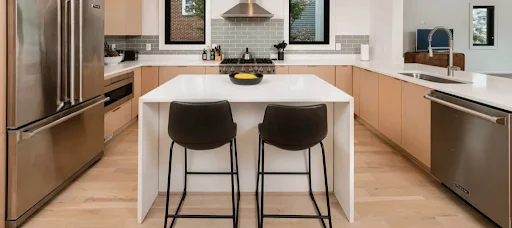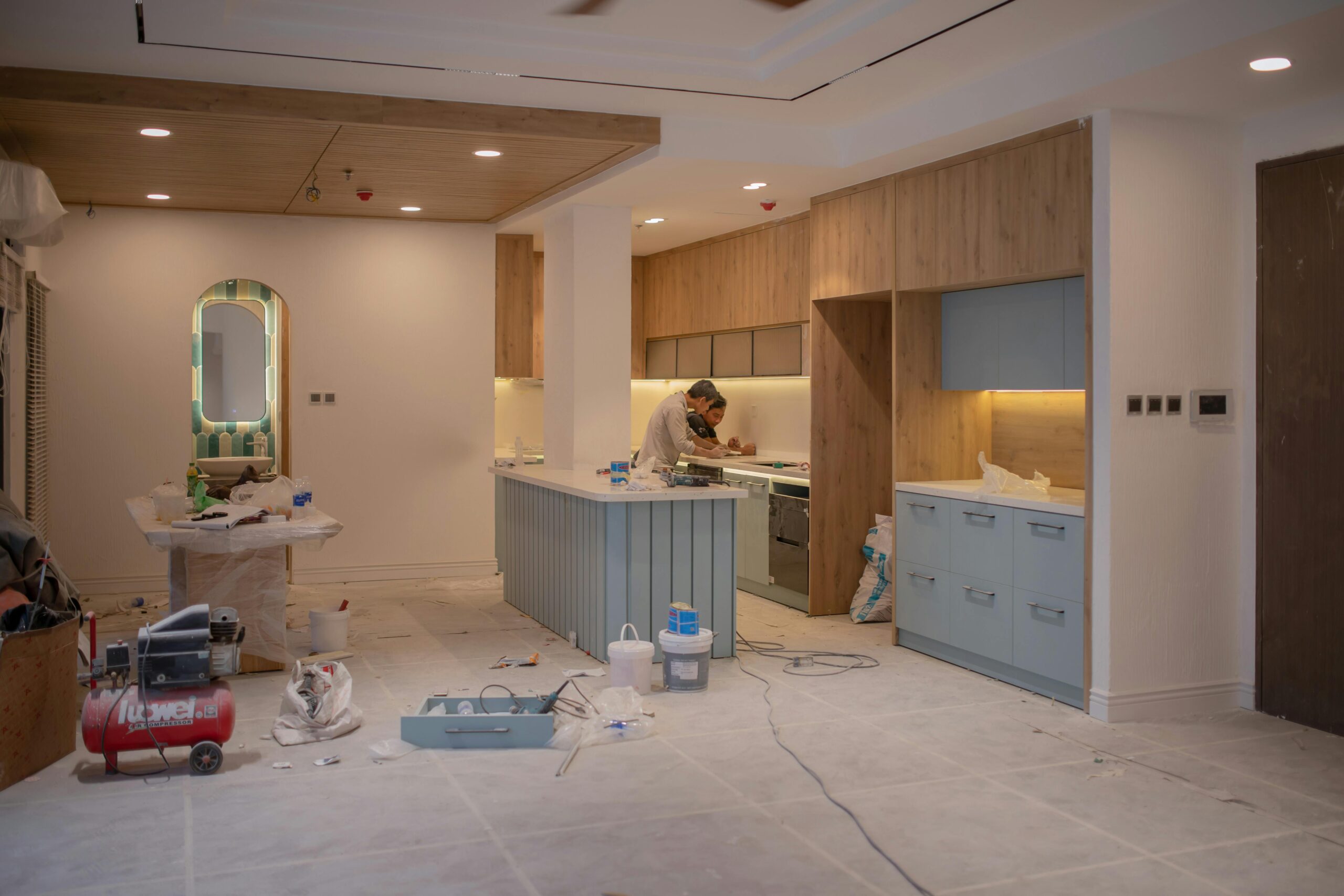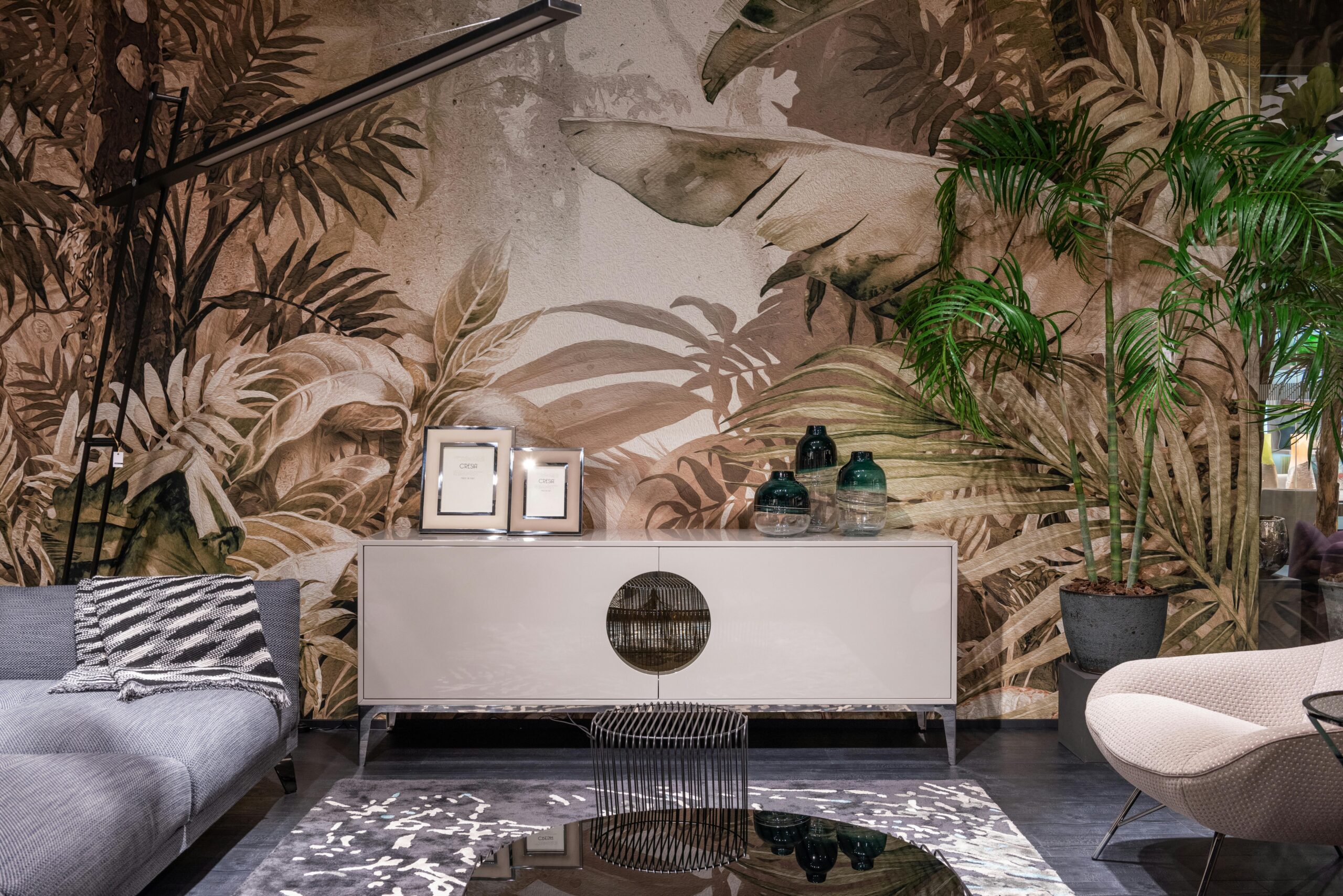HOME IMPROVEMENT
Answering 25 Remodeling Questions

Home remodeling can be both exciting and daunting. Whether it’s updating a kitchen, refreshing a bathroom for Remodeling Questions, or completely renovating a home, homeowners frequently have the same question: How much will it cost? How long will this take? What materials and designs are worth the investment? These uncertainties can make it difficult to take the first step. Many homeowners are unsure where to begin.
This blog aims to answer 25 of the most frequently asked remodeling questions, providing clear, practical advice to help homeowners make informed choices. These insights cover every stage of the remodeling process, from planning and budgeting to design choices and project management. By answering these questions and enlisting the help of professionals like Slate Design and Remodel, homeowners can approach their projects with confidence, clarity, and excitement for the transformation ahead.
Planning Your Remodel
Careful planning is the first step in any successful remodel. Homeowners should clearly define their goals. Are you updating to improve aesthetics, functionality, or home value? Establishing priorities early on helps guide decisions on which rooms or areas to focus on first, ensuring that the project meets both lifestyle needs and long-term objectives. For example, a homeowner may prioritize a kitchen or bathroom remodel due to frequent use while deferring less critical spaces.
Planning also entails gathering inspiration, researching current design trends, and evaluating the home’s structural limitations. Professionals such as Slate Design & Remodel frequently help homeowners by providing design consultations, assisting them in visualizing the end result, and identifying potential issues before work begins. Thoughtful planning not only lays the groundwork for a smoother remodel, but it also helps control costs, which naturally leads to the next critical consideration: budgeting
Budgeting and Costs
One of the first questions homeowners have when planning a remodel is, “How much will it cost?” Budgeting is an important step because it determines the scope of the project, influences design and material choices, and helps to prevent unexpected financial strain. Remodel costs vary greatly depending on the size of the area, the quality of the materials, labor rates, and whether structural changes are required. For example, updating a bathroom with mid-range materials will be significantly less expensive than a high-end kitchen remodel with custom cabinetry and professional-grade appliances.
Transparency is crucial. Reputable remodelers, such as Slate Design & Remodel, offer detailed estimates that break down labor, materials, permits, and contingency funds for unexpected expenses. A contingency budget of 10-15% is frequently recommended to cover unexpected issues such as hidden plumbing or electrical challenges. Setting a clear budget upfront allows homeowners to make informed decisions, prioritize upgrades, and ensure their remodel delivers maximum value. After determining the budget, the next step is to think about design and style choices that will bring the vision to life.
Top content picked just for you—read our Featured Post and get inspired!
Design and Style Decisions
Design is where a remodel begins to take shape, combining functionality and personal preference. Homeowners frequently wonder how to balance aesthetics and practicality: Should the style be timeless, or should it reflect current trends? How can the space reflect your personality while still appealing to potential buyers? Addressing these questions early ensures that the remodel feels seamless and intentional.
Modern trends frequently favor clean lines, neutral color palettes, and multi-functional spaces that maximize usability while maintaining style. Professionals like Slate Design & Remodel help homeowners make decisions about layout changes, fixture selections, and lighting placement to create a space that is both beautiful and functional. Choosing a clear design direction naturally leads to materials and quality, because the right selections bring the design to life while ensuring durability and performance.
Materials and Quality
Choosing the right materials is critical to creating a visually appealing and long-lasting remodel. Homeowners frequently must choose between high-end, mid-range, and cost-effective options. Premium materials may have a higher initial cost, but they provide long-term benefits such as durability, low maintenance, and improved aesthetics. Quartz countertops, hardwood flooring, or energy-efficient windows are examples of features that not only enhance the space but also increase property value.
It’s also crucial to understand the trade-offs of various materials. Mid-range options may strike a balance between quality and cost, whereas budget materials may be suitable for cosmetic updates but require replacement sooner. Professionals like Slate Design & Remodel assist homeowners in evaluating these options, ensuring that materials are consistent with the design vision and long-term objectives. Once the materials have been chosen, the focus naturally shifts to hiring the right professionals to execute the remodel successfully.
Hiring Professionals
Choosing the right professionals is essential for the success of any remodeling project. Homeowners frequently wonder how to find reputable contractors, remodelers, and specialized tradespeople who can deliver quality results. Key considerations include licensing, insurance, experience, portfolio, and client testimonials. Hiring an experienced professional ensures that the project adheres to building codes, stays on schedule, and meets high standards of workmanship.
Working with reputable remodelers, such as Slate Design & Remodel, provides additional peace of mind. Experienced professionals can help homeowners make complex decisions, coordinate tradespeople, and troubleshoot unexpected problems, all while adhering to the project’s vision and budget. Once the right team is in place, homeowners can better manage expectations around timelines and project management, ensuring that the remodel proceeds efficiently and without unnecessary stress.
Timelines and Project Management
Understanding how long a remodel will take is one of the most common concerns among homeowners. Timelines vary depending on the project’s size and complexity, material availability, and the need for structural changes or permits. While smaller projects like a bathroom update may take a few weeks, larger renovations, such as a full kitchen or whole-house remodel, can take several months.
Effective project management is essential for keeping the remodel on track. Slate Design & Remodel coordinates schedules, manages subcontractors, and handles logistics, reducing delays and ensuring clear communication. They also plan ahead of time to deal with potential setbacks, such as weather disruptions or supply shortages. With a clear timeline and organized project management, homeowners can plan daily routines and minimize disruption, naturally leading to the next concern: living during a remodel.
Living Through a Remodel
Remodeling can disrupt daily life, particularly in frequently used areas such as kitchens and bathrooms. Homeowners frequently express concerns about noise, dust, limited access to specific areas, and how to keep their homes functional during construction. Planning ahead and establishing temporary routines can help reduce stress. Setting up a temporary kitchen or designating specific bathrooms for exclusive use ensures continuity while work is underway.
Professionals such as Slate Design & Remodel can advise on how to reduce disruption by scheduling work in stages, protecting existing surfaces, and efficiently coordinating tradespeople. Clear communication about progress and expectations allows homeowners to feel informed and in control. While managing daily life is important, it’s equally crucial to ensure that all work is safe, compliant, and permitted, protecting both the family and the integrity of the remodel.
Safety, Permits, and Regulations
Ensuring safety and compliance is an important aspect of any remodel. Homeowners frequently inquire about the need for permits, how to follow building codes, and what precautions are taken to keep the household safe while construction is underway. Permits are usually required for structural changes, electrical upgrades, plumbing work, or significant exterior modifications. Skipping permits may lead to fines, failed inspections, or costly corrections in the future.
Working with licensed professionals like Slate Design & Remodel ensures that all work adheres to local codes and safety standards. This includes the safe operation of electrical systems, plumbing, structural reinforcements, and tools and equipment. Adhering to regulations not only protects the home and its occupants but also ensures the remodel’s value and longevity. Once compliance is secured, the focus naturally shifts to maintenance and longevity, ensuring that the remodel remains functional and beautiful for years to come.
Maintenance and Longevity
A successful remodel is more than just creating a stunning look; it is also about creating long-lasting spaces. Homeowners often ask how to care for new surfaces, appliances, and fixtures to protect their investment. Choosing durable materials, such as quartz countertops, high-quality flooring, or energy-efficient windows, can reduce long-term maintenance expenses and keep spaces looking fresh for years.
Professionals like Slate Design & Remodel advise on proper care routines, such as countertop sealing, routine HVAC maintenance, and periodic plumbing and electrical system inspections. Maintaining a remodel increases its lifespan, avoids costly repairs, and maintains the overall quality of the home. Once longevity is assured, the next natural consideration is value and resale, as homeowners want to understand how their investment impacts the property’s future worth.
Value and Resale Considerations
Many homeowners remodel not only to improve comfort and style but also to increase their property value. Common questions include which upgrades provide the best return on investment and how to select improvements that appeal to prospective buyers. Kitchen and bathroom remodels, energy-efficient upgrades, and curb appeal enhancements frequently have the highest resale value, while aesthetic updates, such as flooring or paint, can also make a significant difference.
Working with experienced remodelers like Slate Design & Remodel ensures that each update is consistent with both current market trends and the homeowner’s long-term goals. Strategic planning, thoughtful design choices, and high-quality materials all help to create a remodel that is both visually appealing and financially sound. Understanding these factors naturally leads to the final tips for a successful remodeling journey, which help homeowners approach their projects with confidence.
Final Tips for a Successful Remodel
Successful remodeling necessitates a careful balance of planning, budgeting, design, and implementation. Homeowners should prioritize clear communication with contractors, set a realistic timeline, and be ready for unexpected challenges. Setting priorities for remodeling, selecting durable and stylish materials, and staying informed throughout the process can make the experience smoother and more rewarding.
Partnering with trusted professionals such as Slate Design & Remodel ensures that the project runs smoothly and produces results that are consistent with both personal vision and long-term value. By approaching remodeling with careful preparation, professional guidance, and realistic expectations, homeowners can confidently transform their spaces, turning dreams into a functional and beautiful reality.
Curiosity pays off—Explore More and uncover stories that inspire action!
HOME IMPROVEMENT
Common Thermador Appliance Issues and How Prime Fix Repairs Them in San Francisco

Thermador is a top-tier brand that offers a wide range of luxury kitchen appliances, including refrigerators, ovens, cooktops, dishwashers, and more. Their products are known for being durable, high-quality, and designed to deliver professional-grade performance. However, like all appliances, Thermador products can experience occasional issues that need expert attention. If you’re facing any trouble with your Thermador appliances, Prime Fix Appliances Repair offers fast and reliable solutions in San Francisco and the surrounding Bay Area.
At Prime Fix, we specialize in Thermador appliance repair, offering services that help you get your appliances back in top shape. Whether it’s a refrigerator that’s not cooling properly, an oven that won’t heat, or a dishwasher leaking water, we have the expertise to handle it all. In this article, we’ll cover some of the most common Thermador appliance issues and explain how Prime Fix addresses them to restore your kitchen equipment to optimal performance. You can learn more about the range of services at https://prime-fix.com/brands/thermador/.
Common Thermador Appliance Problems
Even though Thermador appliances are designed for durability, they can experience a variety of issues due to normal wear and tear. These issues can disrupt your kitchen routine, but with professional help, they can be resolved quickly and efficiently. Here are some of the most common Thermador appliance problems and how we at Prime Fix tackle them.
Thermador Oven and Cooktop Not Heating Properly
One of the most common issues with Thermador ovens and cooktops is problems with heating. This issue can affect both gas and electric models. If your oven isn’t heating to the desired temperature, or your cooktop isn’t igniting properly, it can be frustrating, especially when you’re trying to prepare meals for your family.
At Prime Fix, we understand the importance of a fully functioning oven and cooktop in your kitchen. The problem could be due to several reasons, including faulty heating elements, broken ignitors, or a malfunctioning thermostat. Our team of experts will quickly diagnose the issue and get your Thermador oven or cooktop working like new.
Thermador Refrigerator Not Cooling or Inconsistent Temperatures
A refrigerator that isn’t cooling properly is more than just a minor inconvenience. It can cause your food to spoil, which may result in costly waste. If your Thermador refrigerator is experiencing temperature fluctuations or isn’t cooling at all, you need to address the issue as soon as possible.
The problem could be caused by several factors, including issues with the compressor, evaporator fan, or condenser coils. At Prime Fix, we specialize in diagnosing and repairing all types of refrigeration issues, ensuring that your Thermador fridge returns to peak performance. We will check each component and fix the problem swiftly, so you don’t have to worry about spoiled food or energy waste.
Thermador Dishwasher Leaks or Fails to Drain
Another common issue with Thermador appliances is a dishwasher that leaks water or doesn’t drain properly after a cycle. A leaking dishwasher can cause water damage to your kitchen floor and lead to bigger issues if left unaddressed. Similarly, a dishwasher that doesn’t drain can leave dishes dirty and cause unpleasant odors.
Leaks often occur due to worn-out door seals or clogged drain hoses. If your Thermador dishwasher isn’t draining, it could be due to a blocked drain pump, faulty float switch, or clogged drain hose. At Prime Fix, we are equipped to fix these common issues, restoring your dishwasher to full functionality and preventing future leaks or drainage problems.
Thermador Cooktop Ignitor Problems
Thermador cooktops are designed to provide precise heat control, but sometimes the ignitors fail to work correctly. If your cooktop burners won’t light, it could be due to a faulty ignitor or a buildup of debris in the ignition system.
In these cases, Prime Fix can clean or replace the ignitors and ensure the burner is functioning properly. We’ll also check for any gas line issues or blockages that could prevent the cooktop from igniting. Our goal is to restore your cooktop’s efficiency, so you can get back to cooking your favorite meals without delays.
Thermador Oven Door Won’t Close or Seal Properly
A malfunctioning oven door that won’t close properly is another issue that can affect the performance of your Thermador oven. If your oven door is misaligned or the door seal is worn, it can cause heat to escape, leading to uneven cooking or longer cooking times.
Prime Fix technicians can assess the problem with your Thermador oven door and fix it promptly. Whether the issue is a misaligned door, a damaged seal, or a broken latch, we have the tools and experience to get your oven door working properly again.
How Prime Fix Solves These Problems
At Prime Fix, we pride ourselves on offering fast, reliable, and professional repair services for Thermador appliances. When you choose us for your repair needs, you can expect:
- Experienced Technicians: Our team of trained and certified technicians is highly experienced in dealing with Thermador appliances. We have the knowledge to diagnose and repair any issues you may be facing.
- High-Quality Parts: We use only high-quality, manufacturer-approved replacement parts for repairs. This ensures that your Thermador appliance functions like new after the repair.
- Same-Day Service: We understand that a broken appliance can disrupt your daily life. That’s why we offer same-day service, so you don’t have to wait long to get your appliance fixed.
- Professional Repairs: We take pride in offering professional, courteous service. Our technicians will arrive on time, perform the necessary repairs efficiently, and leave your kitchen clean.
Common Thermador Repair Issues We Address
Here are some of the most frequent Thermador appliance issues we repair:
- Ovens and Cooktops Not Heating Properly
- Refrigerators Not Cooling or Inconsistent Temperatures
- Dishwashers Leaking or Failing to Drain
- Cooktop Ignitor Failures
- Oven Door Misalignment or Seal Issues
Why Choose Prime Fix for Your Thermador Appliance Repair?
When your Thermador appliance breaks down, you need a trusted expert to fix it quickly and effectively. Prime Fix Appliances Repair is your go-to solution in San Francisco for fast and reliable Thermador appliance repairs. We offer a range of benefits, including:
- Licensed and Insured Technicians
- Same-Day Emergency Repairs
- Manufacturer-Approved Parts
- Comprehensive Warranty on Services
We are proud to serve the San Francisco Bay Area, including Oakland, Palo Alto, and beyond. Whether you need help with your oven, refrigerator, cooktop, or dishwasher, we’re here to provide the professional repair services you need.
Conclusion
Thermador appliances are built to last, but like all machines, they can experience issues over time. From ovens that don’t heat to refrigerators that don’t cool, these problems can be frustrating. At Prime Fix, we specialize in diagnosing and repairing these common Thermador appliance issues with expertise and professionalism. Whether you need help with your Thermador oven, dishwasher, or refrigerator, we’re here to provide the reliable service you need to get your kitchen back to normal. If you need Thermador appliance repair in the San Francisco Bay Area, contact Prime Fix today.
HOME IMPROVEMENT
Keter vs Patiowell Plastic Shed: Which is Better?

When it comes to outdoor storage solutions, plastic sheds have become increasingly popular. They offer durability, weather resistance, and low maintenance compared to traditional wooden or metal sheds. Among the leading options in the market are Keter plastic sheds and Patiowell plastic sheds. But which one is the better choice for your garden or backyard? Let’s dive into a detailed comparison to Patiowell Plastic Shed.
Durability and Material Quality
Keter is a globally recognized brand known for its high-quality resin sheds. They use UV-protected polypropylene, which ensures the shed can withstand sun exposure without fading or becoming brittle. While Keter sheds are certainly durable, Patiowell has quickly gained attention for producing premium plastic garden sheds that match or even surpass Keter in material quality. Patiowell’s sheds are made from high-density polyethylene (HDPE), which is reinforced for extra stability and longevity. This makes them resistant to cracking, warping, and harsh weather conditions, ensuring your shed lasts for years.
Design and Aesthetic Appeal
When it comes to design, Keter sheds offer a range of modern and functional options. Their clean lines and neutral colors fit most outdoor spaces. However, Patiowell sheds stand out for their thoughtful designs tailored to homeowners who value both aesthetics and practicality. Patiowell plastic sheds feature realistic textures, from wood-like finishes to sleek contemporary designs, giving your backyard a polished look. If style matters as much as functionality, a plastic shed from Patiowell might be the better choice.
Ease of Assembly
One of the most important considerations for any shed is assembly. Keter sheds typically come with step-by-step instructions and pre-assembled panels, but some users report that aligning pieces can be tricky. On the other hand, Patiowell has streamlined its assembly process to make it more user-friendly. Many Patiowell sheds come with modular panels that snap together easily, often requiring minimal tools. This is a huge advantage for homeowners who prefer a quick setup without hiring professional help.
Storage Capacity and Versatility
Keter offers a wide range of sizes, from compact storage units to large sheds suitable for storing bikes, garden tools, and outdoor furniture. Patiowell also provides a variety of sizes but tends to focus more on maximizing interior space without increasing the shed’s footprint. This design efficiency allows you to store more items neatly. Additionally, Patiowell sheds often include customizable shelving options and modular layouts, making them highly versatile.

Weather Resistance
Outdoor storage sheds must withstand rain, snow, wind, and sun. Keter sheds are generally weather-resistant, but some models can develop condensation issues if ventilation is not adequate. Patiowell sheds are designed with integrated ventilation systems that minimize moisture buildup, protecting your stored items from mold and mildew. The UV-protected panels also prevent fading, ensuring that your shed retains its color and structural integrity over time.
Price and Value
Price is always a factor when choosing between brands. Keter sheds tend to be slightly more expensive due to their established brand reputation. Patiowell offers competitive pricing without compromising quality, making it an excellent value for homeowners looking for a durable, stylish, and functional plastic garden shed. You can explore their collection at patiowell.com to find options that fit your budget and requirements.
Final Verdict
Both Keter and Patiowell offer high-quality plastic sheds suitable for various storage needs. Keter is ideal for those who prefer a well-known international brand with a range of modern options. However, if you’re looking for a shed that combines premium durability, user-friendly assembly, versatile storage, and stylish designs, Patiowell plastic sheds are a compelling choice. With Patiowell, you get a practical yet aesthetically pleasing solution that stands the test of time.
In conclusion, whether you’re upgrading your backyard storage or installing your first outdoor shed, visiting patiowell.com can help you explore a variety of plastic sheds tailored to meet your needs. Patiowell proves that a shed can be both functional and beautiful, making it a standout option in today’s market.
HOME IMPROVEMENT
How to Bring Nature Indoors: Using Animal-Themed Wallpaper for a Cozy and Stylish Home

Nature calms a busy room and adds a bit of wonder. Animal patterns do this especially well. They bring movement, story, and gentle humor without clutter. If you want an easy upgrade that works in many styles, explore Animals traditional wallpaper for prints that feel timeless yet fresh.
Why animal motifs work
Creatures add life to straight lines and hard surfaces. Feathers, fur, and scales read as soft texture from across the room. The eye follows a bird in flight or a fox in tall grass, and the space feels calmer. You can make the look playful or refined. It all depends on palette, scale, and placement.
Style directions to consider
- Classic and quiet. Toile scenes or fine line drawings in two colors suit bedrooms, studies, and small dining corners.
- Modern and graphic. Bold silhouettes—cranes, swallows, or tigers—on a solid ground. Keep furniture simple so the shapes lead.
- Cottage and woodland. Moths, hares, and owls in soft greens and browns bring a storybook mood without feeling childish.
- Tropical and coastal. Herons, fish, or sea turtles pair well with rattan, linen, and sandy neutrals.
- Kids and nurseries. Friendly bears or safari scenes in gentle tones create a calm backdrop for sleep and play.
Where animal prints shine
- Living room. Put a feature wall behind the sofa. Add linen curtains and a wood coffee table to keep it grounded.
- Bedroom. Use the headboard wall like art. Choose smaller repeats for compact rooms; go larger in high-ceiling spaces.
- Entry and hallway. A narrow repeat guides the eye forward and makes a strong first impression.
- Home office. A tidy motif behind the desk looks clean on video and cuts visual noise.
- Powder room. One dramatic wall plus a simple mirror creates a boutique moment. Ventilate well.
Color, scale, and balance
Decide what you want the wall to do. Need calm? Choose soft neutrals or misty blues with tiny repeats. Want energy? Try richer shades—ink, forest, umber—and a larger scene. Match the scale to the surface. Big murals suit broad spans. Small, tight patterns flatter niches and short walls. Keep one hero surface and let nearby planes breathe. Repeat two colors from the print in pillows, a throw, or a rug so the room feels intentional.
Materials and maintenance that fit real life
Peel-and-stick panels make weekend projects possible and suit renters. You can lift and reset a strip during install, then remove it later from sound, fully cured paint. Pasted options still shine on tricky surfaces and very busy corridors; they just need more prep. Many removable films are wipeable with a soft cloth and mild soap. Skip abrasives and harsh chemicals. In humid rooms, add ventilation and keep edges away from constant steam. Always order a sample and check color from morning to night.
Simple styling without extra lists
Let the animals lead and mix textures—linen, wool, stone, and a touch of metal—for depth. Repeat soft shapes. Add a round mirror, a globe lamp, or a table with curved edges. This keeps the natural look and avoids clutter. Keep art focused. Fewer, larger pieces beat a crowded grid and keep sightlines clean.
Planning, testing, and light
Tape a sample where you’ll see it most and look at it from the next room. If the view feels busy, lower contrast or choose a smaller repeat. Strong sun can fade prints over time, so consider UV shades on bright exposures. Good evening lighting matters too: a warm table lamp near the patterned wall adds glow and makes details read softly.
Budget-smart ways to start
You don’t need to cover every wall. Try the back of open shelves, a closet door, or a framed panel over a console. In a studio, one bird or woodland scene can define the lounge without a bulky divider. In a larger space, wrap only the fireplace wall or built-ins to avoid pattern fatigue while still adding character.
Need help choosing?
California Wallpaper can help with samples, repeat size, and lead times. Ask about finish (matte vs. lightly textured), cleanability, and the best adhesive type for your paint.
Bring the look home
Animal designs add story and comfort in a way plain paint can’t. Start small if you’re unsure. Keep the palette tight, match the scale to the wall, and repeat key tones in your textiles. With a few simple choices, you’ll get a home that feels cozy, stylish, and a little closer to nature—every single day.

 ENTERTAINMENT1 month ago
ENTERTAINMENT1 month agoExploring the Kristen Archives: A Treasure Trove of Erotica and More

 LIFESTYLE9 months ago
LIFESTYLE9 months agoThe Disciplinary Wives Club: Spanking for Love, Not Punishment

 GENERAL5 months ago
GENERAL5 months ago5 Factors That Affect Tattoo Removal Success

 HEALTH8 months ago
HEALTH8 months agoHappy Hippo Kratom Reviews: Read Before You Buy!

 BUSINESS9 months ago
BUSINESS9 months agoBrand Visibility with Imprint Now and Custom Poly Mailers

 TECHNOLOGY9 months ago
TECHNOLOGY9 months agoBlog Arcy Art: Where Architecture Meets Art

 HOME IMPROVEMENT9 months ago
HOME IMPROVEMENT9 months agoThe Do’s and Don’ts of Renting Rubbish Bins for Your Next Renovation

 BUSINESS10 months ago
BUSINESS10 months agoExploring the Benefits of Commercial Printing










